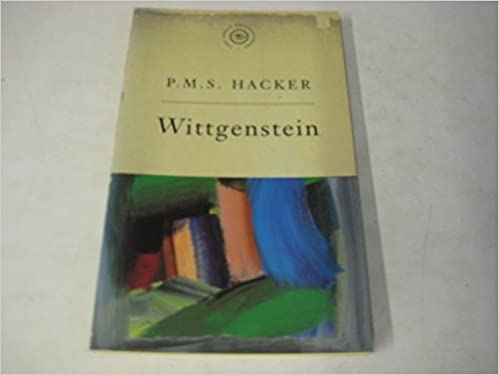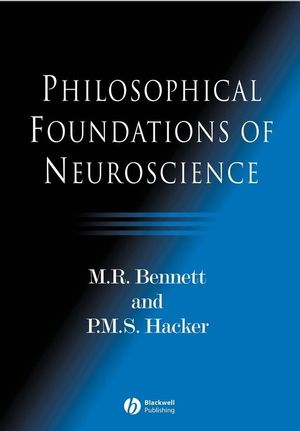The Mystery of Blindsight Helps Us Understand the Mind Better
How can a blind person demonstrate awareness of an object in his visual field — and yet not be conscious of it?Blindsight is the remarkable ability of some blind people to sense objects that they cannot actually see. It occurs when the blindness is caused by damage to the main part of the brain that processes visual information (the striate cortex). But the eyes themselves are intact. The eyes continue to see (sensation) but nothing is receiving the messages (perception). Or so we would think, except for this:
One of the most contentious discussions in philosophy of mind and neuroscience is the nature of perception as opposed to sensation. How can we perceive objects in our environment? On a deeper level, what do we mean by “perception”? In what ways does perception differ from sensation, if at all?
The neurobiology of perception provides an excellent example of the ways in which classical scholastic philosophy can help us understand the mind. Our modern materialistic and mechanistic theories of the mind often confuse us. They detract from understanding rather than contributing to it.
From the classical perspective, sensation is the reception of the form of an external object on the sensory organ. In the case of sight, sensation is the activation of the retina caused by light entering the eye. Perception is the interpretation of that sensation. It should be noted that, while the eye and the brain are the organs by which sensation and perception respectively are accomplished, the person using the sensory and perceptual powers of the soul* is the agent who is sensing and perceiving.
From the modern perspective, which is generally a mechanistic understanding of neurobiology, sensation entails a series of biochemical reactions in the retina and the optic apparatus and perception involves interpretation carried out by the cerebral cortex. From this perspective it is assumed that the cerebral cortical is needed for any level of awareness of objects in the visual field.
A classical challenge to that mechanistic view is blindsight. A person who has lost the striate cortex, which is a portion of the occipital lobe that represents the primary area where visual information is processed, cannot see in the normal sense. But, paradoxically, cortically blind people can often demonstrate awareness of objects in their visual field even though they say that they cannot see the object.
For example, as in the video above, a blind person who has blindsight will walk straight down a hallway, unable to see what is in front of him. However if there is an obstacle placed in front of him, he will go around the obstacle. If asked why he went around the obstacle he will say that that just seemed to be the right path to take. But he would deny that he saw an obstacle that caused him to take that path. Thus blindsight appears to be a level of awareness that does not involve consciousness or identification of a specific object in the visual field.
Modern mechanistic understandings of the mind/brain relationship clearly present a problem for understanding blindsight. How can a person have awareness of an object in his visual field without being conscious of it? What could the neurobiological basis of this unusual situation be? Most theories of blindsight invoke intermediate connections between the eyes and the visual cortex that go to other parts of the brain. These connections are thought to permit a kind of preconscious awareness of objects in the visual field (as asserted in the video). But the neurobiology on which that explanation depends is unclear and not at all well understood.
The classical scholastic understanding of sensation and perception seems to me to be a simpler and clearer explanation of blindsight. In blindsight, classically understood, the patient is capable of sensation via his normal retina. However perception of objects in his visual field, which is associated with neuronal activity in the occipital lobes, does not occur normally because of the cortical damage. This dissociation between sensation and perception leaves the individual with awareness that he is not able to understand but to which he is able to react.

An interesting perspective on this dissociation between experience and consciousness can be gleaned from the work of Ludwig Wittgenstein (1889–1951), an Austrian–British philosopher. Wittgenstein distinguished between experiencing a sensation and knowing about the sensation.
The classic example of this distinction is the difference between having a pain and knowing about the pain. When I have a toothache, for example, Wittgenstein would say that I don’t know that I have a toothache – I just have it.
To know about my toothache is to analyze it and to understand it. That is a separate ability from actually having the toothache. I can hypothesize and theorize and contemplate my toothache — which is knowledge — but, even though knowledge is derived from experience, that is not the same thing as experiencing it. Put another way, having a toothache hurts but knowing about a toothache doesn’t.
Applied to the concept of blindsight, Wittgenstein’s distinction between experience and knowledge provides a clear framework for understanding these visual abilities. A person with blindsight has the experience of vision without having the knowledge of vision. A person with blindsight can react to objects in a visual field without knowing that he can see the objects.
Philosophers Maxwell Bennett and Peter Hacker have written extensively on the problems that poor philosophy causes in the interpretation of neuroscience. Blindsight is a difficult thing to explain on a neurobiological basis if we have a mechanistic understanding of human vision and the human brain.
On the other hand, if we take a more classical scholastic perspective on sensation and perception and if we note Wittgenstein’s distinction between experience and knowledge, blindsight is a simple example of sensation dissociated from perception which leaves an experience (sensation) of objects in the visual field without knowledge (perception) of those objects. From a neurobiological perspective, the retina and anterior parts of the optic system mediate sensation. The cortex and posterior parts of the optic system mediate perception. When they are disconnected, patients have sensation without perception. That is, they have experience without knowledge.

The remarkable dissociation between sensation and perception described by scholastic philosophers and between experience and knowledge described by Wittgenstein also seems to explain a curious experimental result that neuroscientist Benjamin Libet noted in the mid-20th century. While Libet is more famous for his groundbreaking work supporting free will, I think that his most remarkable research involved sensation and perception.
He asked volunteers to note the time at which they felt the pinprick on their finger, using a clock that recorded time in milliseconds. He simultaneously recorded brain waves from the volunteers’ scalp to correlate the timing of the pinprick, the volunteers’ awareness of the pinprick, and activity in the brain. He found that it took about half a second for brain waves that correspond to pinprick to occur.
However, the volunteers felt the pinprick within a few milliseconds of the moment of the prick, roughly half a second before their brains showed any new activity. In other words, the volunteers were aware of the pinprick before the electrical impulses from their fingers reached their brains.
Libet was perplexed by this finding. He hypothesized that the brain “backdated” the sensation to make it seem simultaneous with the pinprick. Essentially, he was suggesting that the volunteers’ brains tricked them into thinking that the sensation was simultaneous with the pinprick.
I think that Libet’s ad hoc interpretation is incorrect. A clearer and simpler interpretation is that the volunteers actually felt the pinprick the moment their fingers were pricked — the sensation was in fact simultaneous with the pinprick. The perception of the pinprick — that is, the more detailed understanding of what was happening — entailed activity in the brain that was recorded roughly half a second later. Sensation first, perception later.
Libet’s paradoxical sensory experiment is analogous to what is seen in blindsight. There is a dissociation between sensation and experience on one hand and perception and interpretation on the other hand. These findings are quite consistent with the classical Aristotelian and scholastic understandings of the mind-body relationship and with Wittgenstein’s understanding of the difference between experience and knowledge.
Neuroscience has been hampered by the implicit adherence of neuroscientists to mechanistic materialistic perspectives. A deeper understanding of good philosophy — such as scholastic philosophy and the profound work of philosophers like Wittgenstein — can help clean away the conceptual junk in modern mechanistic and materialist neuroscience.
Note: The term soul, as used here, may be misunderstood. The soul is the organization and function of a living person — the structure and coordination of cells and tissues, organs and body parts necessary for life. Aristotle used the metaphor of the eye: If the eye were the body, sight would be the soul. It’s the difference between a live body and a dead body. Issues around immortality (the spirit) are separate.
You may also wish to read: What if only part — not all — of your brain were transplanted? You might end up seeing double out of an eye a thousand miles away. Our senses don’t actually work quite the way we think. Frankenstein-type experiments could have awful real-world consequences. (Michael Egnor)
